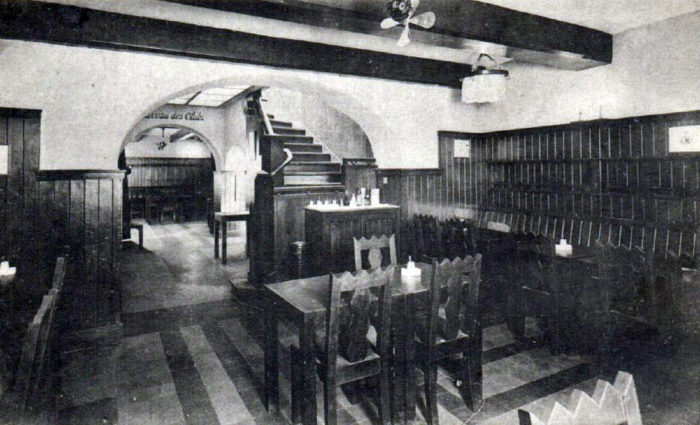Op Boulevard Garibaldi nr. 20 stond de Taverne Charley, die in 1933 werd geopend en nu is verdwenen. Simone de Beauvoir vestigde zich er graag tijdens haar verschillende verblijven in Marseille, waar ze werd aangesteld montgrand middelbare school. Het was in deze brasserie dat ze op 10 september 1937, bij haar terugkeer van een reis naar Griekenland, een zeer melancholische brief schreef aan Jean-Paul Sartre zijn metgezel, schrijver en filosoof, die al naar de Elzas was vertrokken. De filosoof, romanschrijver, briefschrijver, memoirist en essayist Simone de Beauvoir wordt vaak beschouwd als een belangrijke theoreticus van het feminisme en nam in de jaren zeventig deel aan de vrouwenbevrijdingsbeweging.
 Het was ook in de taverne Charley die op 28 april 1943 werd gearresteerd door de Marseille Gestapo, John Multon, alias Lunel, secretaris en “ man van vertrouwen van de regionale leider van de Combat-beweging, Maurice Chevance, alias Bertin. Deze arrestatie was catastrofaal voor het Franse binnenlandse verzet omdat Multon, die zeer op de hoogte was van het functioneren van de organisatie, in de regio Zuid (R2), maar ook in Lyon, ermee instemde om met de Duitse diensten te spreken en samen te werken. Er volgde een reeks trapsgewijze arrestaties (met name die van Bertje Albrecht et René Hardy in Lyon en generaal Delestraint in Parijs) die de Gestapo in staat moesten stellen de leiders van de Verenigde Verzetsbewegingen (MUR) te identificeren, waaronder Jean Moulin, en leiden tot het drama van Caluire-en-Bake.
Het was ook in de taverne Charley die op 28 april 1943 werd gearresteerd door de Marseille Gestapo, John Multon, alias Lunel, secretaris en “ man van vertrouwen van de regionale leider van de Combat-beweging, Maurice Chevance, alias Bertin. Deze arrestatie was catastrofaal voor het Franse binnenlandse verzet omdat Multon, die zeer op de hoogte was van het functioneren van de organisatie, in de regio Zuid (R2), maar ook in Lyon, ermee instemde om met de Duitse diensten te spreken en samen te werken. Er volgde een reeks trapsgewijze arrestaties (met name die van Bertje Albrecht et René Hardy in Lyon en generaal Delestraint in Parijs) die de Gestapo in staat moesten stellen de leiders van de Verenigde Verzetsbewegingen (MUR) te identificeren, waaronder Jean Moulin, en leiden tot het drama van Caluire-en-Bake.




















